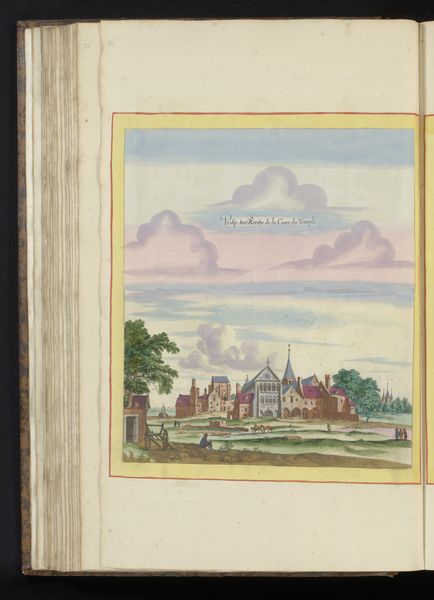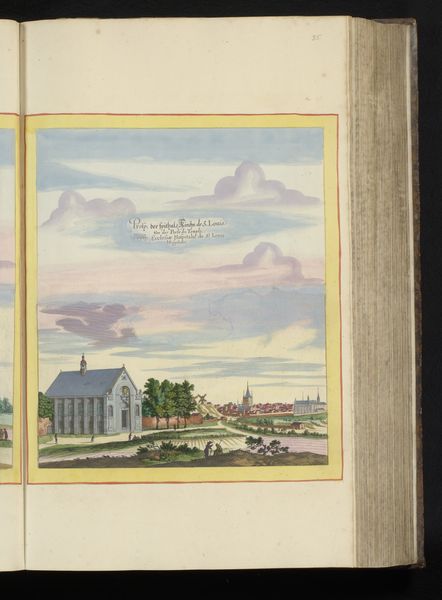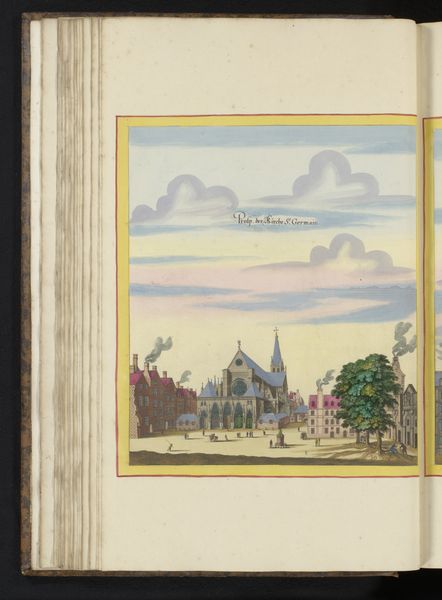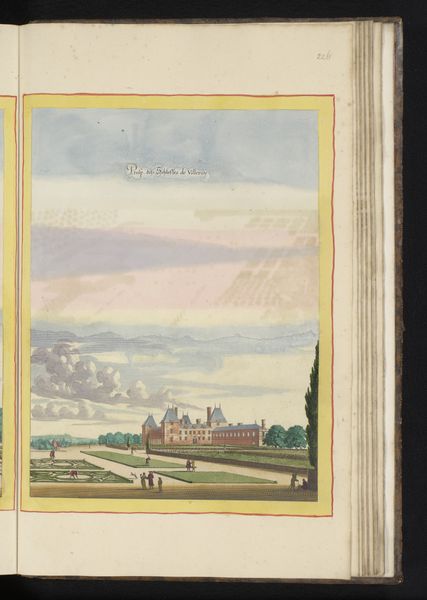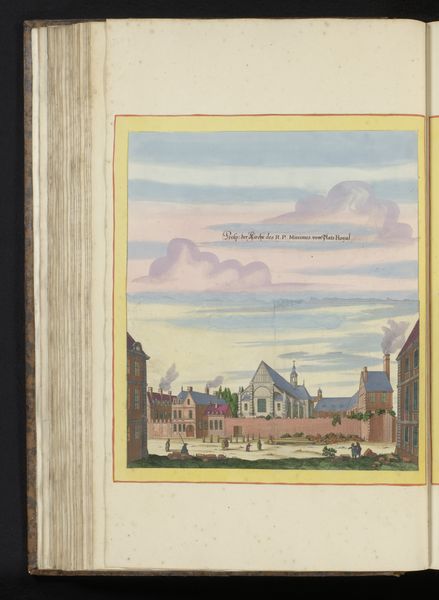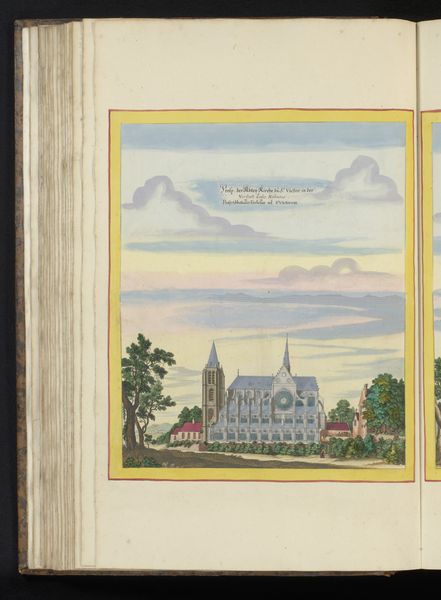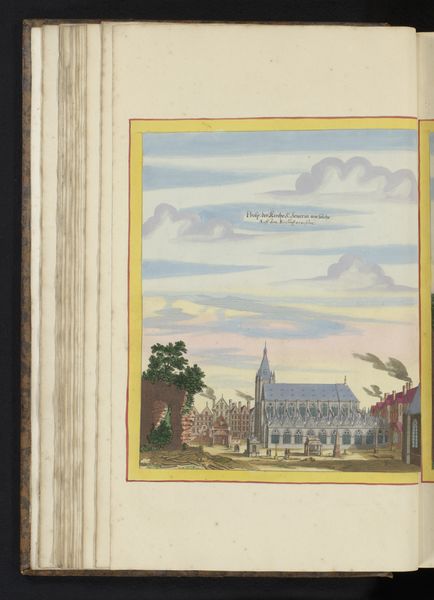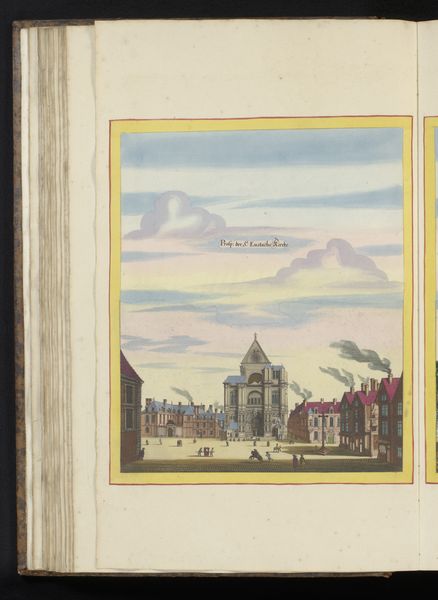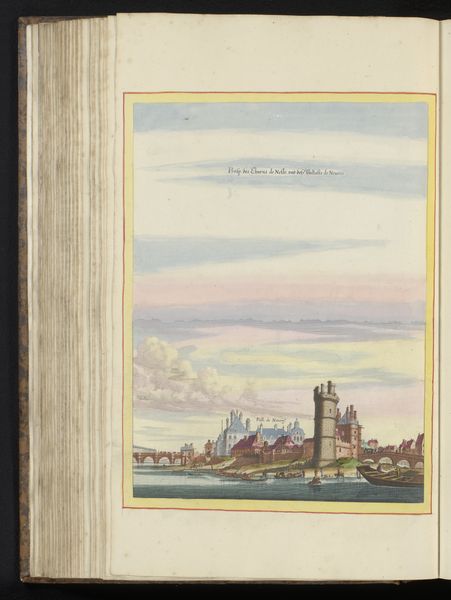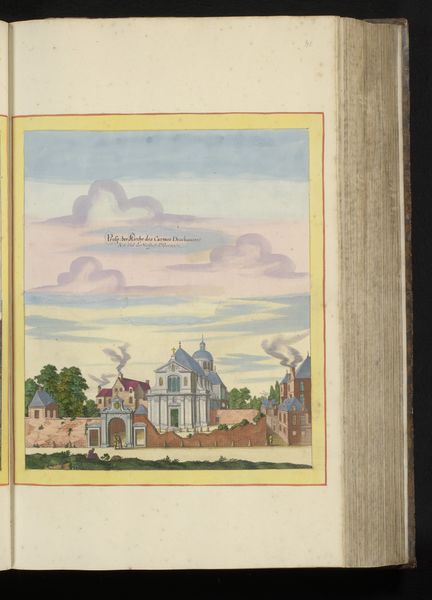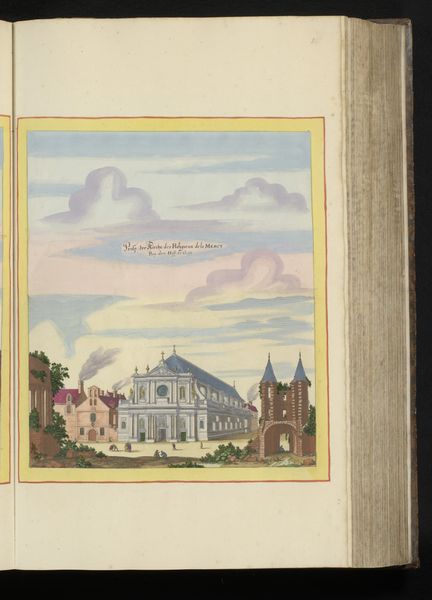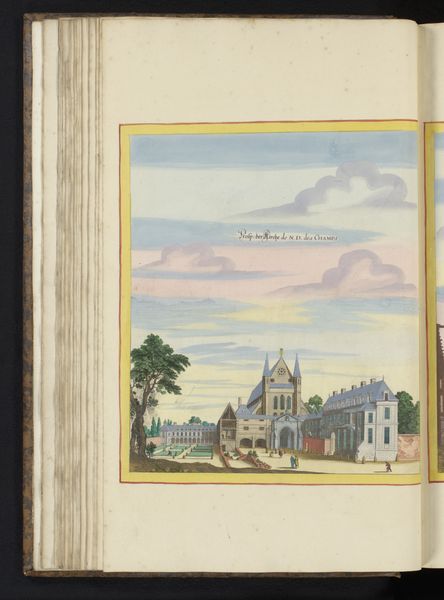
painting, paper, watercolor
#
baroque
#
painting
#
landscape
#
perspective
#
paper
#
watercolor
#
coloured pencil
#
line
#
cityscape
Dimensions: height 337 mm, width 282 mm, height 534 mm, width 330 mm
Copyright: Rijks Museum: Open Domain
Curator: Matthäus Merian the Younger’s “View of the Church and Monastery of Saint-Victor in Paris," made around 1655, is a detailed rendering in watercolor and ink on paper, currently held in the Rijksmuseum. Editor: Immediately, I’m struck by the flatness, the deliberate perspective, and the pastel shades; there's an almost dreamlike quality despite the architectural precision. Curator: Indeed, the use of line is very prominent, almost diagrammatic. The artist creates a compelling spatial structure through carefully calculated recession and contrasting geometric forms—the church against the open field. Note, also, the proportional relationship of the built environment to the land, where scale works to establish human interaction. Editor: Precisely. Consider the material conditions: the cost of pigments at the time and the labour needed for its construction. The work speaks volumes about both individual devotion and communal effort. Moreover, where does the paper come from? Who is creating it and what is their social position and labor in the making of this type of rendering? Curator: While those aspects certainly provide crucial grounding, what also intrigues me is how the composition encourages the eye to journey from the foreground figures towards the idealized cityscape. There's a subtle balance between nature and constructed space that contributes to a sense of harmonious order. Editor: Harmonious, perhaps, for those depicted enjoying the open field in view of such architectural wonder, and who most likely benefitted from the church and the abbey it dominated, though it does feel a bit utopian, almost staged. I find myself drawn to the materiality of the rendering itself, its creation is a statement that art is fundamentally rooted in processes and their material reality, something that must not be looked over as we delve deeper into its visual aspects and theoretical framework. Curator: I concede the image prompts inquiries that move well beyond mere form, demanding a contextual and societal critique to understand the era, and while I am stuck on line and pictorial architecture, I can’t deny the image reveals layers of production with their particular labor values that deserve an evaluation in their own right. Editor: I think it offers a reminder that art's power lies as much in the doing as in the viewing.
Comments
No comments
Be the first to comment and join the conversation on the ultimate creative platform.

